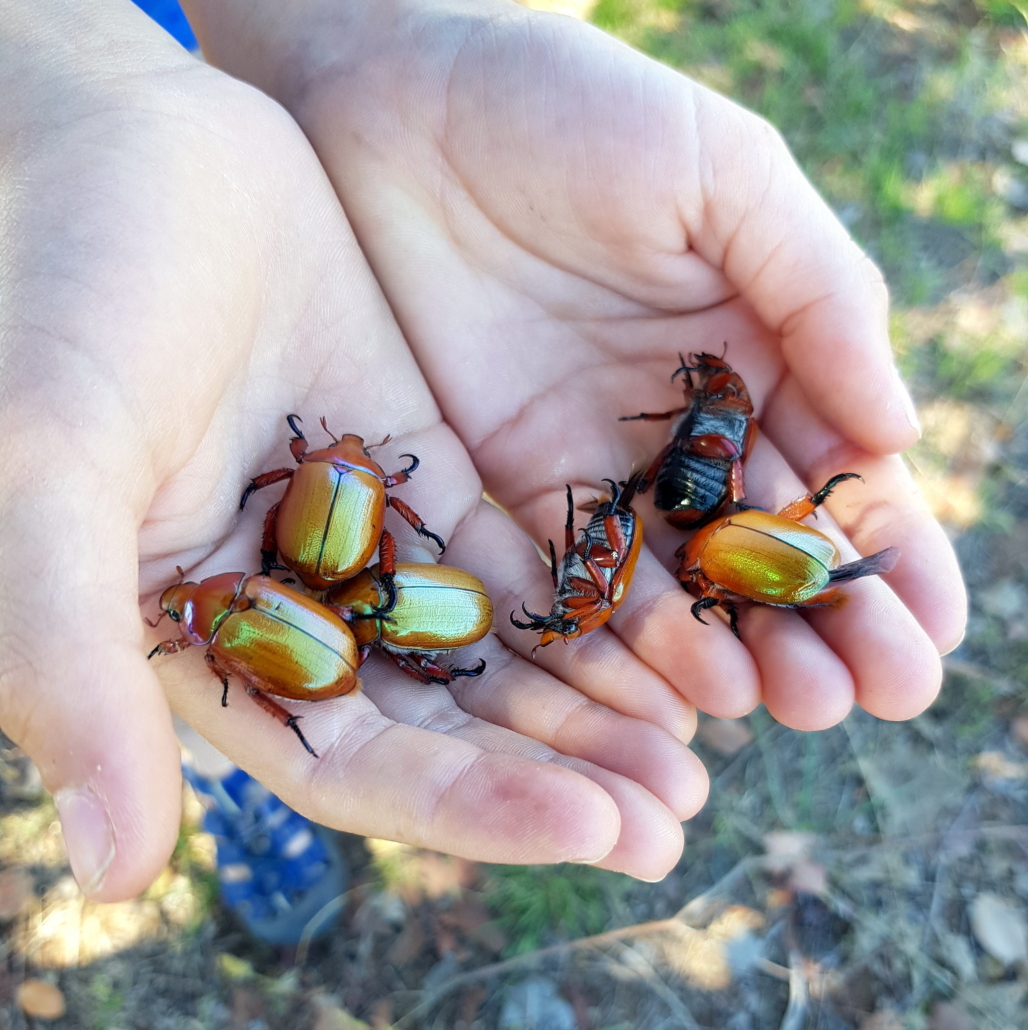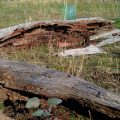A not so jolly time for Christmas Beetles
Published 16th December 2022. Written by Maddison O’Brien
Have you seen any Christmas Beetles this year? Ask anyone over the age of 35, and they will remember Christmas Beetles appearing in the weeks leading up to the holiday season by the thousands! You might hear stories of tree branches bending under the weight of the sheer numbers of these iconic beetles or them smashing into house windows, making quite the racket.
Christmas beetles are a type of scarab (a group that includes dung beetles and chafers). Compared to other scarabs, they are large and chunky, with an unmistakable metallic shell that can range from brown, green, yellow or pink in colour. They most obviously make themselves known in midsummer by clumsily swarming around lights in towns throughout eastern Australia. Adult Christmas beetles generally feed on eucalyptus leaves. They prefer open woodland to forest and thrive in pastures wherever trees have been left in place.

In recent years these colourful critters have been hard to come by. Today, you would be lucky to see one. Scientists have been wondering why these beautiful beetles are disappearing. Climate change and loss of natural habitat are two likely explanations for the bugs’ decline, but the fact is, more research is needed to be sure.
Just like the long list of threatened and endangered native animal species, Christmas beetles rely on healthy woodlands to thrive. The adults need eucalypt leaves, and the larvae need the roots of grasses, presumably native grasses. With only 1% of remnant Box Gum Grassy Woodland left in Australia (yes, you read that right, only 1%) and the increasing use of insecticides, it’s no wonder we’re seeing less of these Christmas characters.
Unfortunately, Christmas beetles are just one species whose disappearance gives us a glimpse into the alarming decline of insect numbers globally. Insects are at the beginning of the food chain, and their importance in the environment cannot be overstated. They are what feeds the birds, mammals, fish and frogs, and they are responsible for pollination, which is essential in producing 75% of the foods we eat. To help the Christmas beetle and its insect relatives, we need to focus on building biodiverse landscapes, growing more native plants and reducing our insecticide use.
While you’ve got some time over the holiday break, why not download iNaturalist? It is an app that allows you to record the flora and fauna species around you quickly and easily. That data is then shared with scientists, which helps in the grand scheme to paint a more accurate picture of species populations and placement in the environment. It’s a great app to get the kids involved with and helps with Identification too!
We wish you all a bright and colourful Christmas and a gentle New Year! Thanks for reading the Catchment Corner, and we’ll be back with more articles in January 2023!





